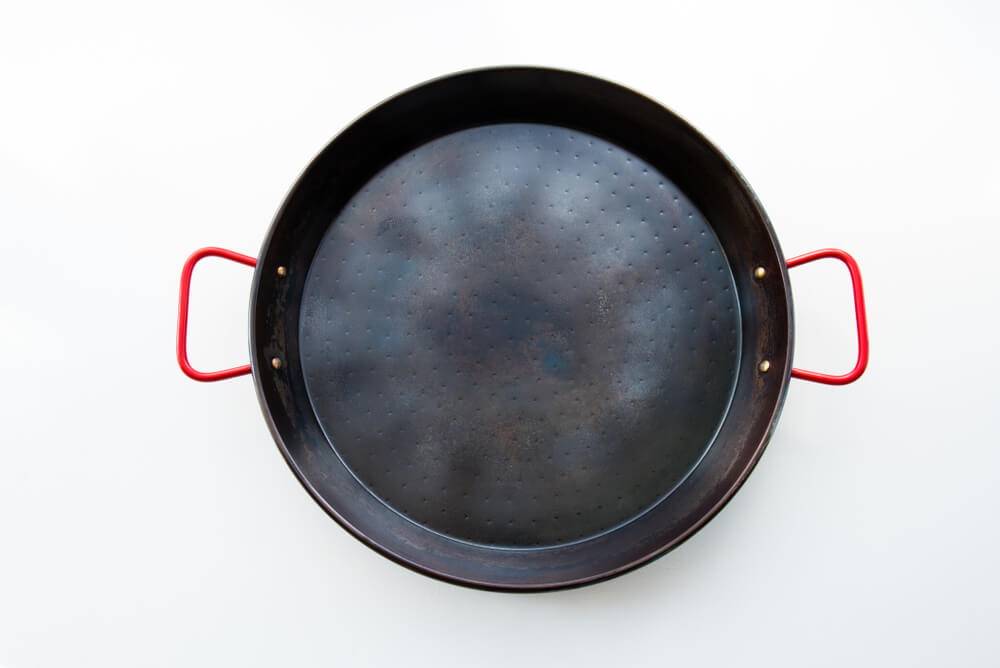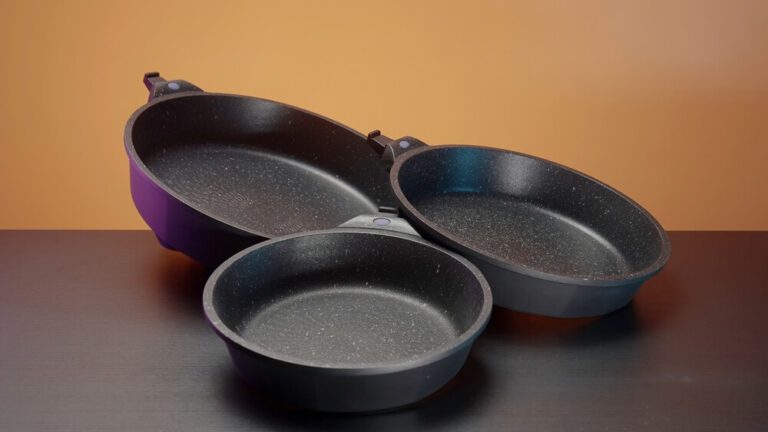Comal Cookware: The Secret To Perfect Tortillas and More
Comal cookware is more than just a kitchen tool—it’s a symbol of culinary tradition that bridges the gap between past and present.
Whether crafted from clay, cast iron, or equipped with modern electric technology, Comals serve as versatile griddles perfect for cooking everything from tortillas to tender meats. Their unique design enhances the flavor and authenticity of every dish.
Known for exceptional heat retention, especially in clay and cast iron varieties, Comals ensure even cooking and infuse food with a distinctive taste. From toasting spices and warming tortillas to grilling meat, their versatility is unmatched. For modern kitchens, electric Comals add the convenience of precise temperature control.
This article will take you on a journey through the world of Comal cookware—its features, uses, and why it remains a timeless choice for cooks everywhere. Dive in to explore its rich heritage and functionality.
What Is A Comal?
Comal is a flat frying pan used for cooking. It is made of materials such as clay, cast iron, or non-stick. It has been in Mexico and Central America since 700 BC. Spread around B.C. Similar to Indian tawa, it is used for frying spices, cooking tortillas, cutting meat, and more. You can buy it at Latin American grocery stores or online.
Home stoves are usually made of strong cast iron and come in round or elongated oval shapes to fit one or two stovetop burners. In many cultures, people pass Comal cookware from grandmother to mother to daughter. They believe that a tender used for many years heats up faster and cooks more cleanly.
How To Use A Comal Cookware: 7 Crucial Steps
Comal cookware, a versatile cooking tool with roots dating back to ancient times, is a staple in many kitchens. Follow these seven steps for an enjoyable and efficient cooking experience.
Step 1: Select The Right Comal
To start, choose a grill made from durable cast iron, which guarantees both longevity and consistent heat distribution. Consider the appropriate size to complement your stovetop configuration. Choose a round grill designed for a single burner or an elongated oval designed for two burners. Ensuring a proper match in size ensures that your soft skills will accommodate your cooking needs.
Step 2: Season The Comal
For initial use, season your tenderloin by applying a thin layer of cooking oil and heating over low to medium heat. This simple step prevents sticking and gradually enhances the flavor of your food. Seasoning contributes to the tender’s longevity and improves its cooking performance.
Step 3: Preheat The Comal
To start, place the tenderloin on the burner and let it preheat for a few minutes on medium heat. This step ensures that the tender reaches the ideal temperature for effective cooking. Preheating is a key step in tender preparation for optimal and even cooking results.
Step 4: Test The Temperature
To test the readiness of the tender, sprinkle a few drops of water on its surface. If the water sizzles and evaporates quickly, it indicates that the tender has been heated enough. This quick and easy method ensures that the tenderloin is at the correct temperature for successful cooking.
Step 5: Cooking With The Comal Cookware
Place your ingredients on a hot surface, whether it’s tortillas, spices, or meat. Use a spatula or tongs to flip and move items, ensuring even cooking. This straightforward process guarantees that your foods are consistently cooked to tenderness.
Step 6: Avoid Overcrowding
For best cooking results, stay away from tender crowds. Leave some space between items to promote even heat distribution and thorough cooking. This simple practice ensures that every ingredient in the tenderloin receives the attention it needs for a delicious and evenly prepared meal.
Step 7: Clean And Store
After use, allow to cool gently before cleaning. Gently scrub off any residue with a soft brush or cloth, avoiding harsh abrasives. Store the tender in a dry place to prevent rusting, ensuring its longevity and continued effectiveness.
5 Types Of Comal Cookware: Traditional Sets
Comal cookware, with its rich history and cultural significance, comes in many varieties, each designed for specific cooking purposes. Here are five distinct types of compost, highlighting their unique properties and applications.
- Traditional Clay Comal
- Cast Iron Comal
- Carbon Steel Comal
- Non-Stick Comal
- Electric Comal
1. Traditional Clay Comal:

Made from traditional soft clay, adds a unique flavor to food. It is famous for its even heat distribution, making it perfect for cooking tortillas, toasting spices, and preparing various traditional recipes. The clay construction enhances the cooking experience, ensuring a consistent and delicious result for your favorite dishes.
2. Cast Iron Comal:

Cast iron Comal is popular for its durability and exceptional heat retention. Its versatility makes it perfect for grilling meat, toasting chili, and even cooking a variety of dishes. With its sturdy construction, cast iron is a desirable option for delicate kitchens. It ensures consistent and efficient cooking for a variety of culinary delights.
3. Carbon Steel Comal:

Carbon steel Comal is famous for being mild, lightweight, and responsive. Its quick heating makes it ideal for a variety of tasks, such as making tortillas, searing meats, and even quick cooking. With its versatility and responsiveness, carbon steel is a reliable choice in the kitchen. This ensures a fast and even cooking experience for a wide variety of foods.
4. Non-Stick Comal:

Non-stick comes from Comal, convenient cooking and effortless cleaning. It excels in preparing delicate items like fish and prevents tortillas from sticking during cooking. This type of gentle comes to provide a hassle-free cooking experience with minimal cleanup. With its non-stick properties, it offers a practical solution for those looking for convenience in the kitchen.
5. Electric Comal:

Electric Comal found in modern kitchens offers convenience through adjustable temperature settings. Ideal for both indoor and outdoor use, they offer a controlled cooking surface for items like pancakes and quesadillas. These Comals come for versatility, making them suitable for a variety of dishes.
4 Care And Maintenance Tips For Comal Cookware:
The Comal, versatile and time-honored cookware essential , requires proper care to ensure longevity and optimal performance. Here are four detailed tips to help you maintain and make the most of your tender.
Tip 1: Season Regularly
Before using your tender for the first time and regularly after that, apply a thin layer of cooking oil and heat it. This straightforward process prevents sticking and, as a bonus, enhances the flavor of your food over time. Your mild seasoning ensures longevity and contributes to a more enjoyable cooking experience.
Tip 2: Preheat Wisely
Before each use, place the tenderloin on the burner and let it preheat for a few minutes on medium heat. This tip ensures that the surface achieves the ideal temperature for effective and efficient cooking. Preheating the tenderloin is key to achieving the best results in your culinary endeavors.
Tip 3: Careful Cleaning
Once you are done using the conditioner, let it cool down before starting the cleaning process. Gently clean the residue with a soft brush or cloth, avoiding harsh abrasives that can damage the surface. This careful cleaning routine helps maintain the delicate condition and ensures its longevity for continued effective use.
Tip 4: Proper Storage
Keep in a cool, dry place to avoid rust. Proper storage not only ensures its longevity but also helps maintain its effectiveness over the years. This simple step contributes to the durability and continued utility of the tender in your kitchen.
Related Questions:
What Is The Best Method To Clean A Comal?
The best way to clean Comal is to let it cool down after use. Gently scrub off any residue using a soft brush or cloth, as harsh abrasives can damage the paved surface.
To prevent rust, store the Comal in a dry place after drying thoroughly. This method not only preserves the Comal state but also ensures long-lasting durability and sustained cooking performance.
Can I Use A Comal On An Induction Cooktop?
Traditional clay and cast iron comals are not suitable for induction cooktops, as these materials lack the magnetic properties required for induction heating. However, some Comals are specifically designed with materials compatible with induction cooktops.
Check the product specifications or labels to ensure compatibility. Induction-friendly comals are crafted from materials like stainless steel or have a magnetic base that responds to induction heat, making them suitable for use on these cooktops.
Conclusion:
Comal cookware has traditionally been a favorite among culinary enthusiasts. From traditional clay varieties to modern electric options, these cookware caters to a variety of needs. Each cookware has its characteristics. With proper care, including seasoning, thoughtful preheating, and careful cleaning, tenders can be cherished tools. Comal cookware has maintained its heritage for generations.








One Comment